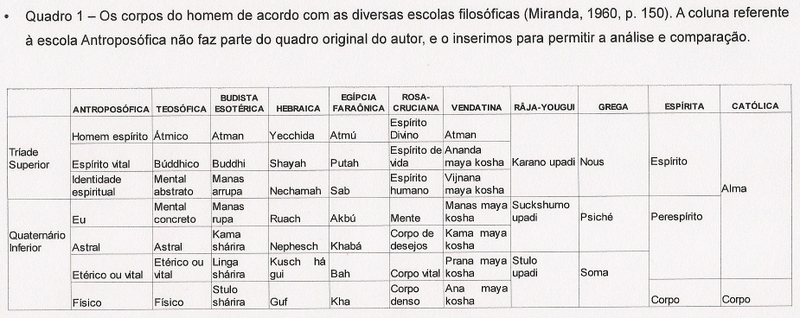The science of the human
by Rubens Salles
Waldorf Pedagogy was developed and carried out taking into account that the human being is formed by a set of forces that go beyond their physical body, and that need to be understood and considered so that education is not just to teach subjects to children, but rather a science for human development.
The physical body and vital forces
Although organic beings – plant, animal and man – are physically constituted by the same substances that are also part of the mineral kingdom, such as oxygen, carbon, calcium, iron, etc., their formation and development are subject to different natural laws. While minerals do not undergo changes in their physical structure, except by external forces, organic beings have a limited existence in time. They are born, develop and then die. Organic beings have, in addition to their mineral or physical body, a set of vital forces, individualized and delimited, which is not physical. This set of vital forces is what gives life to beings and prevents their matter from following the normal laws of chemistry and physics, which allows, for example, the plant to grow upwards, in the opposite direction to the force of gravity. They are forces that do not act on minerals, which exist only in space, because, by themselves, they do not develop over time.
When an organic being dies, its physical body decomposes and its substance returns to the mineral kingdom, and starts to obey again the laws of the inorganic world, which demonstrates that the purely mineral state is the opposite of life. We can recognize these forces at work when, in the proximity of death, the processes of devitalization, crystal deposits, calculations occur. Sueli Passerini states that “it is the eternal game of life and death, understood as the game between shaping forces, bearers of life, and mineralizing forces, bearers of death.”(1)
Thus, we can say that what differentiates beings from the organic vegetable and animal kingdoms, including man, from the mineral and inorganic kingdoms, is what we call life, where there is birth, breathing, metabolism, growth, regeneration, reproduction and death. These vital forces are also called by Steiner the vital body or etheric body.(2)
The astral body and the soul forces
The life of all organic beings depends on the influences of the environment, sunlight, water, air. Men, animals and plants live, but in very different ways:
1) While the parts of the plant develop one by one with the passage of time, men and animals, with the exception of cases of metamorphosis, are already born with their complete bodies.
2) While plants live at the mercy of all weather and environmental influences, man and animals move around in the environment and can look for the most suitable places to fulfill their instincts and needs.
3) While plants live in a state of constant “dormancy”, without expressing any kind of sensation, men and animals go through alternate states of sleep and wakefulness, and have the characteristic of feeling and expressing sensations and instincts, being that the higher animals do it also with the use of the voice.
Thus, we see that both man and animals have a set of soul forces that plants do not have. In the case of animals, these forces acquire specific characteristics for each species. Knowing the habits of a wild species, we can know exactly what the behavior pattern of a young will be even before its birth. In the case of man this is no longer possible, because our soul forces are individual, and each human being has different sympathies, antipathies, ideals, desires, passions, etc. These soul forces are also called by Steiner the body of sensations or the astral body.(3)
The Self – the human spirit
In addition to an individual soul identity, only man is aware of himself as an individual, and other faculties that we do not find in animals. Lanz highlights five unique faculties of man:
1) Only man can think, oppose the world in a subject-object relationship. He can represent his sensorial experiences in an abstract way and elevate himself to concepts and ideas;
2) Man possesses the durability of feelings, in addition to the presence of the cause. Even more, it can provoke a feeling by pure mental representation. The animal is surrendered to its sensations and feelings. When the cause that provokes a sensation or feeling ceases, the mental state also ends;
3) Only man can represent, in the form of images, a being or a situation of which there is no longer any trace. Memory, as the faculty of “calling back” any previously experienced situation, is an exclusively human faculty;
4) Man can dominate himself, renounce a pleasure or the satisfaction of a desire. He may ponder various motives, reflect on the consequences of a past act. All this is impossible for the animal. No animal can master its instincts by an autonomous decision.
5) Only man can have the freedom to act, and consciously choose among several possible acts. He alone can act morally or immorally; the animal follows fixed paths predetermined by the characteristics of its species. He is irresponsible.(4)
The I, this element that determines the autonomy of man's personality, his individual conscience, and which represents his spirit, is what distinguishes him from the animal. Through it, man can control his feelings, instincts and passions. The spirit's control over our soul impulses will determine our ethics. For Steiner, by designating himself as “I”, man gives himself, in his heart, a name. An entity capable of saying “I” to itself constitutes a world by itself.(5)
This conception of the constitution of the human being is not unique to Anthroposophy. Although it is almost completely ignored in the Western world, the philosophical schools of the East have known about it for many millennia. Both Hindus, Chinese, Chaldeans, Egyptians and Hebrews refer to it in their works and texts, whether profane or esoteric.(6)
In the table below, we can see how cultures very different from each other, and guided by different philosophical currents, developed similar concepts regarding the constitution of the human being.

Bibliography
- PASSERINI, Sueli. Ariadne's Thread, 1998, p. 33.
- STEINER, Rudolph. The Education of the Child According to Spiritual Science, 1984, p. 11.
- STEINER, Rudolph. The Education of the Child According to Spiritual Science, 1984, p. 13.
- LANZ, Rudolph. Waldorf Pedagogy, 1990, p. 20-21
- STEINER, Rudolph. The Education of the Child According to Spiritual Science, 1984, p. 14
- MIRANDA, Gaius. Liberation through Yoga, 1960, p. 147
***


